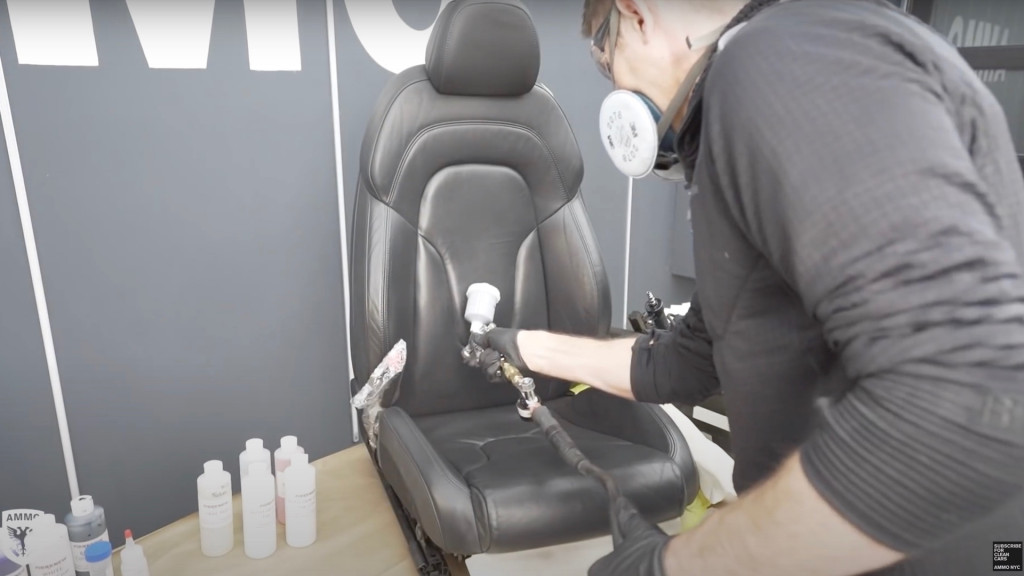Daily use can take a toll on your car's leather seats, but there is a way to reverse that. In this video, Ammo NYC founder Larry Kosilla explains how to repair damaged leather upholstery in your car, step-by-step.
The demo car for this video is Kosilla's own first-generation Audi R8, which has seen plenty of use. He bought the car in Atlanta and drove it back to his home in the Northeast, and has used it to commute to and from his shop ever since.
That amount of use caused the leather to crack and lose its dye, particularly on the driver's seat side bolsters, which often get brushed when getting in and out. All of that is repairable, though, and at less than half the price of replacement material, Kosilla claims.
Granted, Kosilla got professional help from Fibrenew, which uses proprietary products and techniques to repair leather. The first step was to throughly clean the seat, and cover areas that weren't getting worked on. The seat was then cleaned again, and dried with a hair dryer.

Ammo NYC tackles car-leather repair
Next, the leather got sanded with 320-grit sandpaper. Then it was time to color-match new dye to the rest of the interior. That's important, because otherwise the repaired areas will be a different shade to other areas, similar to repainting a door or bumper without blending it with the rest of the paintwork.
Fibrenew uses a tool that photographs a clean piece of leather (Kosilla used the back of the seat). Software generates a color code for the dye, showing how to mix individual dye colors to get a match. It's similar to the paint-mixing stations at hardware stores, except the dye is mixed by hand, not with a machine.
Once the dye is mixed, it gets sprayed on with an air gun. However, that leaves a smooth, shiny surface that stands out from the non-repaired areas. Fibrenew has its own process that involves spraying additional product onto the surface to give it texture. Finally, the completed surface gets a top coat to protect the new dye.
It's worth noting that this process doesn't remove creases in the leather, which occur naturally as the material gets worn in over time. The only way to get rid of those is to replace the upholstery, but you may end up with new leather that doesn't match what's already there, Kosilla noted. Watch the full video for more tips on car-leather repair.